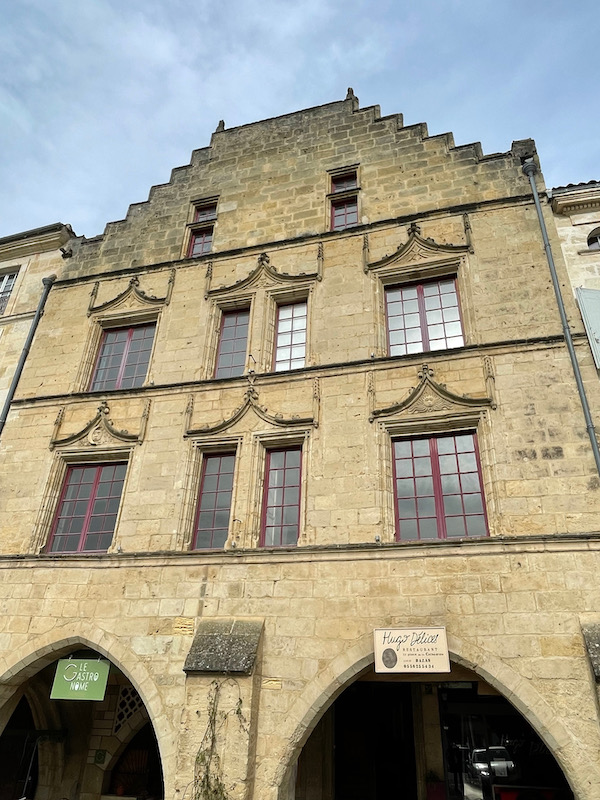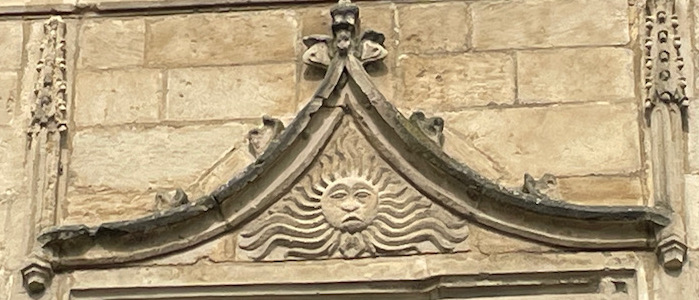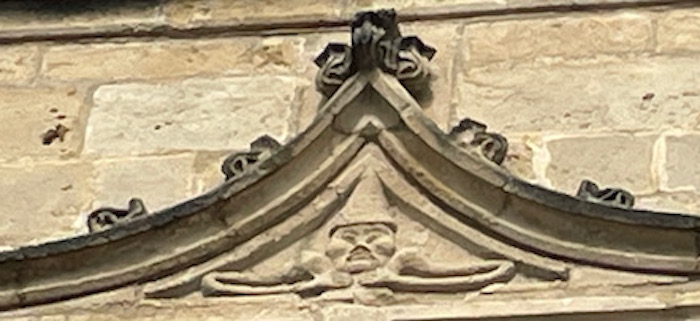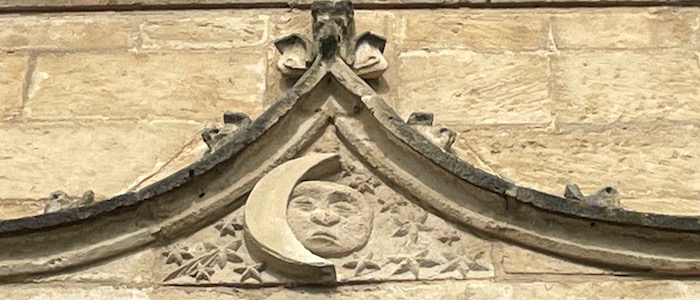Our Blog - Bazas, France
From the First Iron Age, Bazas established itself as one of the strongholds of SouthWest France with ramparts and monumental gates, which very early on gave it a military role and a certain supremacy. Gregory of Tours cites a bishop of Bazas during the invasion of the Vandals in the 5th century and mentions a siege of Bazas in 406. According to a poem by Paulinus of Pella, the city escaped destruction by the Visigoths in 414. It was bitterly contested between French and English troops during the Hundred Years' War and was besieged in 1347 by English troops and then again in 1370 by the French. During the Wars of Religion, the Huguenots entered the city in 1561 and devastated the cathedral (which was rebuilt). It is one of the few small towns that we have visited that is actually growing, although still pretty small with only 5,000 people.
The old town hall was built in 1488 and rebuilt in 1733. The triangular pediment bears the city's coat of arms. On the ground floor, the musée municipal occupies the 4 rooms of the old prison. There are prehistoric and Gallo-Roman remains, those of a treasure from the Middle Ages, a model of the city made from a drawing by a Dutch traveler from 1650, objects of sacred art, and a dungeon.
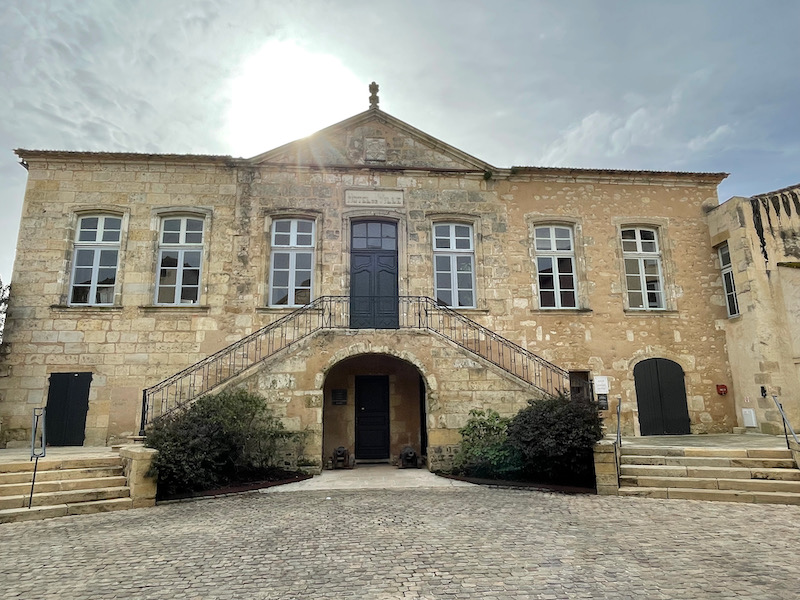
In its current form, the market hall was built in 1890 on the site of the first market which dated from 1485. On one side, there is a marble statue entitled "Belles vendanges" by the sculptor Lucien Pallez, who offered it to the town in 1911.
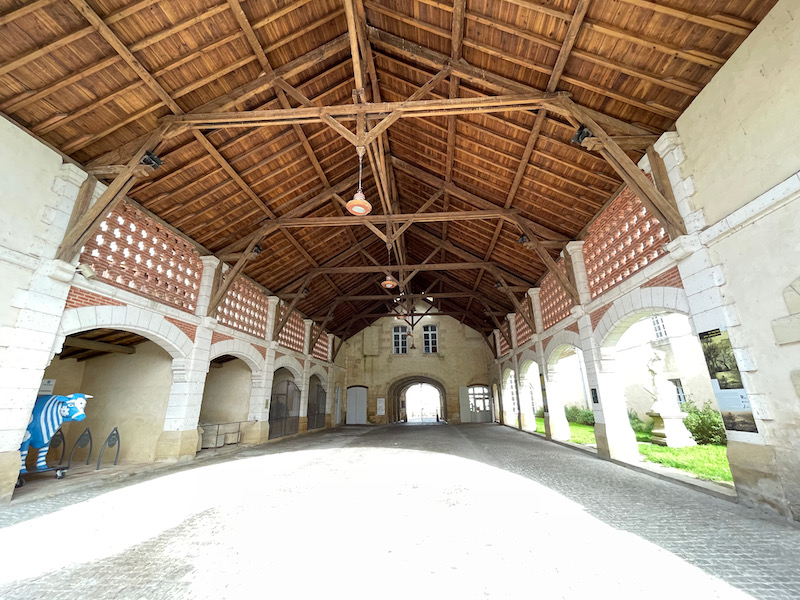
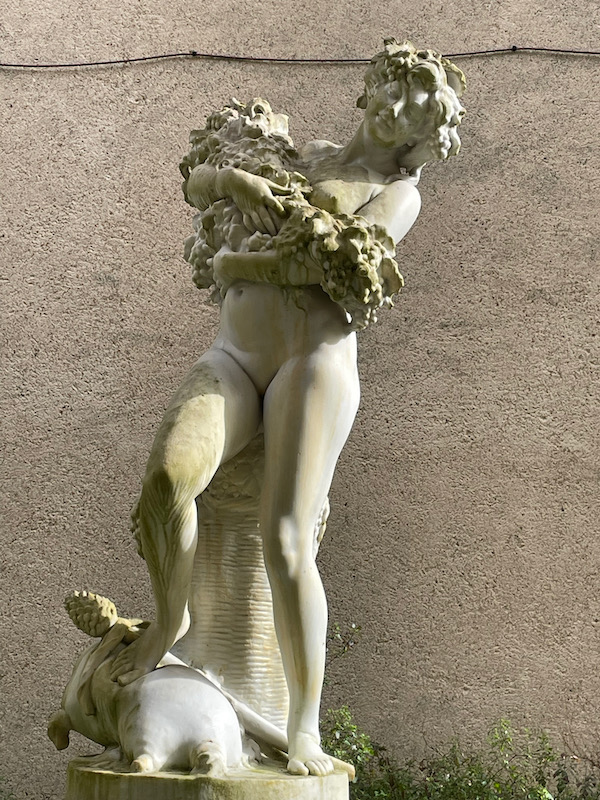
The main site in town is the Cathedral. The current cathedral was built from the 13th to the 14th century from a Romanesque construction, traces of which are still visible in the base of the bell tower. The cathedral is dedicated to Saint John the Baptist, and the story goes that a lady from Bazas went to Jerusalem and, after giving gifts to the executioner, collected the blood of John the Baptist in a vial during his beheading. She then returned to Bazas and left the vial of blood in the church.
That older cathedral was apparently ruined by the Normans in 853 and a new one built from its ruins at the end of the 11th century. It was then rebuilt in Gothic style in the 13th century only to be mostly destroyed when the Calvinists took the town in 1561. The facade from that 13th century church was preserved when the inhabitants of the town collected money to save it. The rest of the cathedral was rebuilt on the 13th century model between 1583 and 1605.
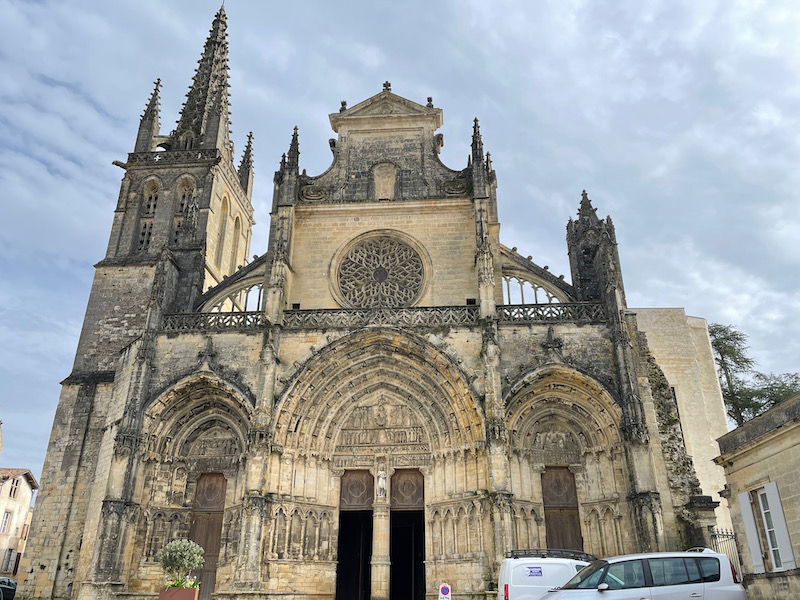
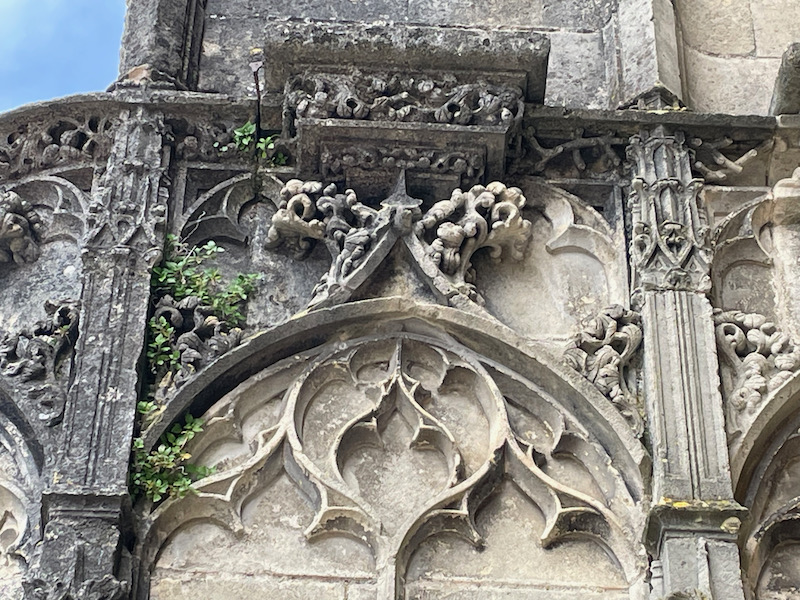
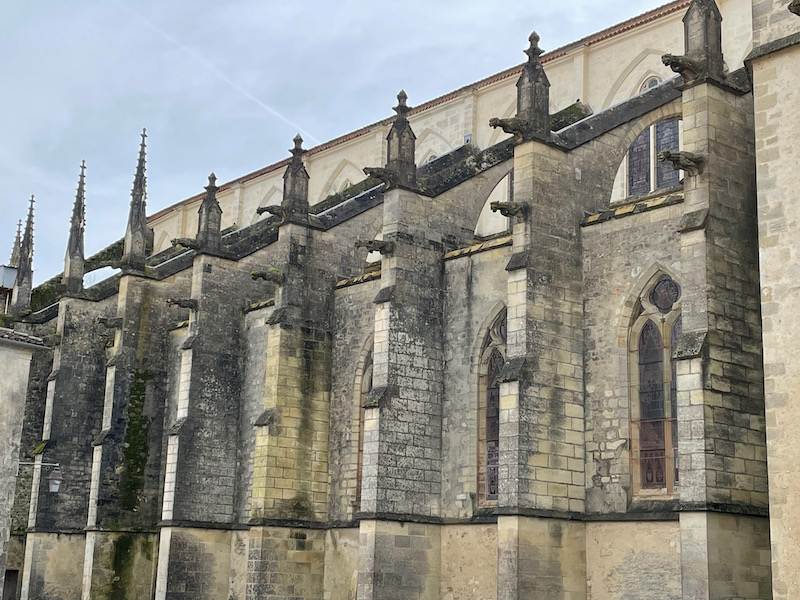
There are 3 portals on the front, each with a carved tympanum. I will start with the North portal, which seemed to be the most damaged (or maybe just the dirtiest) but also the one that I have the most information on. This portal is dedicated to Saint Peter. These are difficult to see sometimes, but the very top is a boat (on the left) and Saint Peter in the waves on the right, struggling to survive in the water. The left part, the empty boat, represents the Church needing someone to guide it. The right part (I think) is from Matthew where Peter wanted to walk on water but he was overcome with doubt and sank. He cried out to Jesus, who caught him in his hand. Then in the middle register, we see Jesus asking Peter to follow him on the left side, then in the middle is the story of the miraculous catch from the Gospel of Luke. Peter is on the boat on the left, rowing, while Jesus is in the middle holding a book and teaching. Then Jesus tells Peter to go into deep water and throw out the nets (although they had been fishing all night and not caught anything). Peter on the right-side of the boat throws out a net and pulls it back in, full of fish. Saint James and Saint John are on the right. The bottom register shows Jesus presenting the keys to the kingdom to Peter (you can see the building representing the kingdom). The center shows the martyrdom of Peter. Crucified upside down. he died around the year 64 under the reign of Emperor Nero, who is seen seated on his throne to the right of the cross, witnessing the torture of Peter (you can see his scepter and crown.
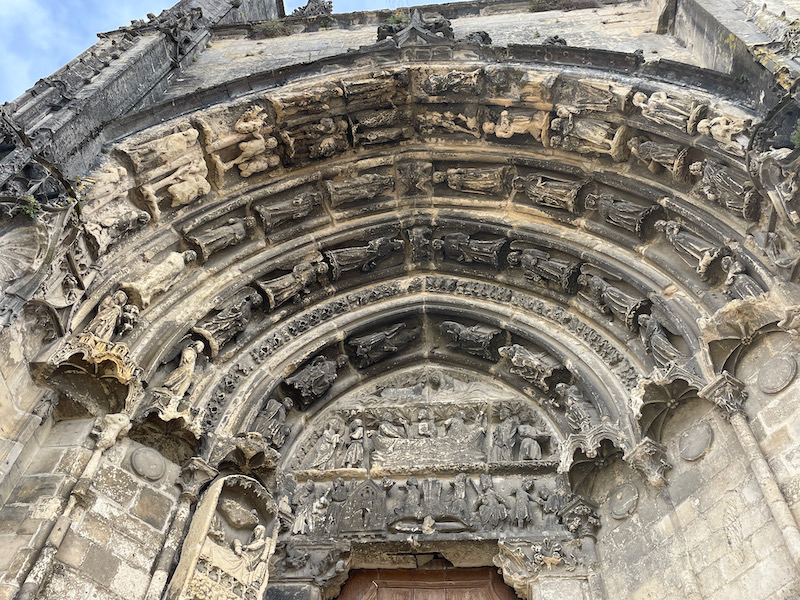
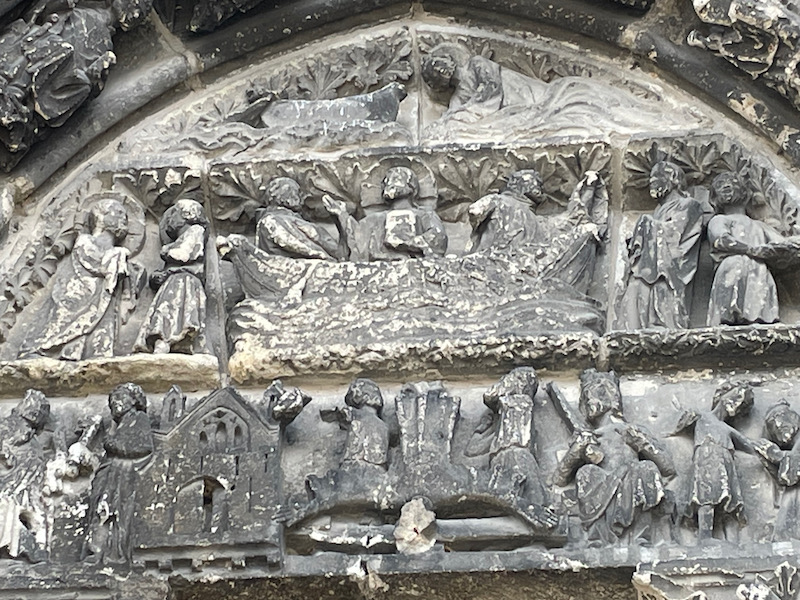
The Central portal shows two things, the life of John the Baptist and the Last Judgement. Across the very bottom (the lintel), scenes from the life of Saint John the Baptist, from his nativity to his martyrdom. One clear thing in the last picture is a woman laying in bed, which is Elizabeth, the mother of John the Baptist, who has just given birth and the baby is in a basket. Then directly above this, you see people being resurrected from the dead, opening the lids of their coffins and getting out. Continuing up, is the separation of the saved (who will go to heaven) from the damned (who will go to hell). Then at the top is Christ, sitting on the throne, with angels above him carrying the the instruments of the Passion.
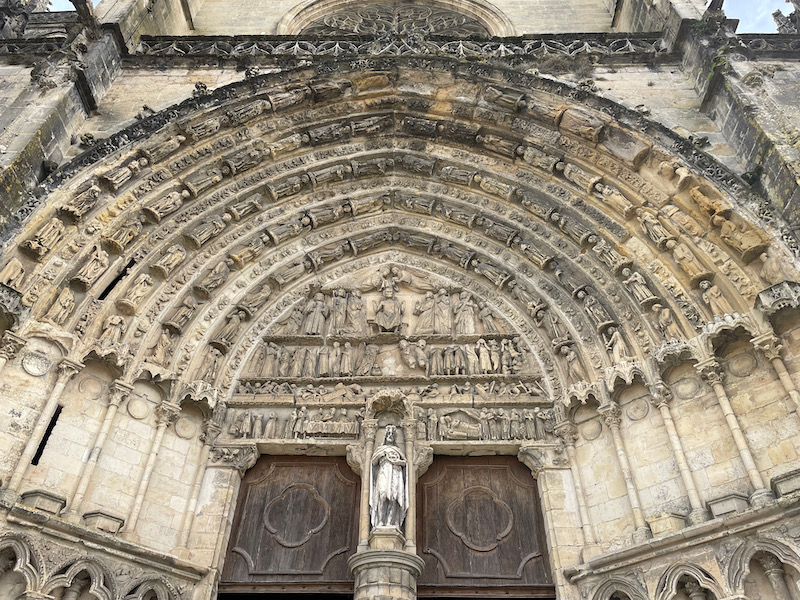
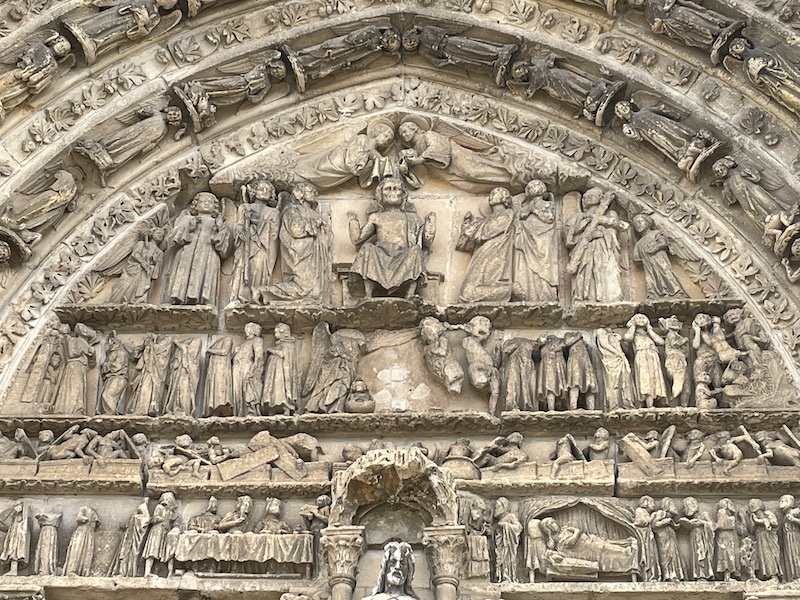
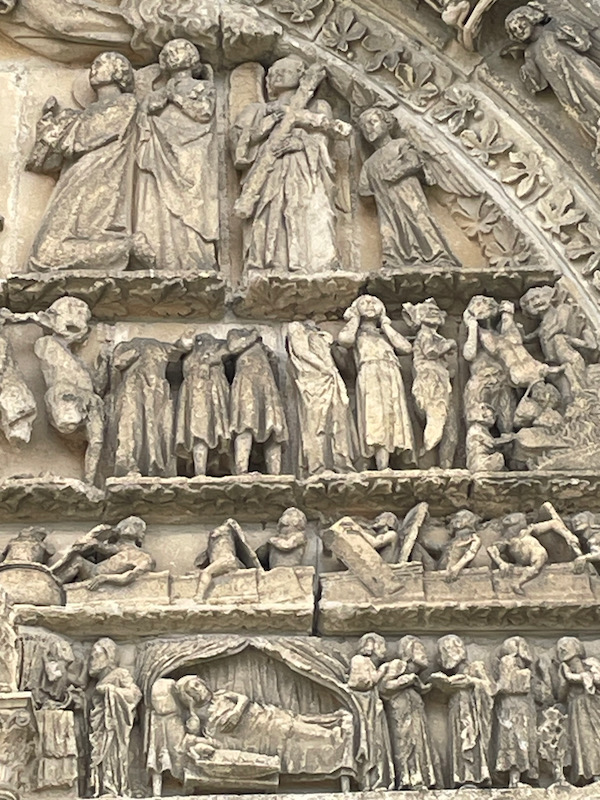
The South portal has the theme of the Coronation of the Virgin. It shows episodes from the life of Mary, from her birth to the Flight into Egypt to her death. There are also characters from the Tree of Jesse.
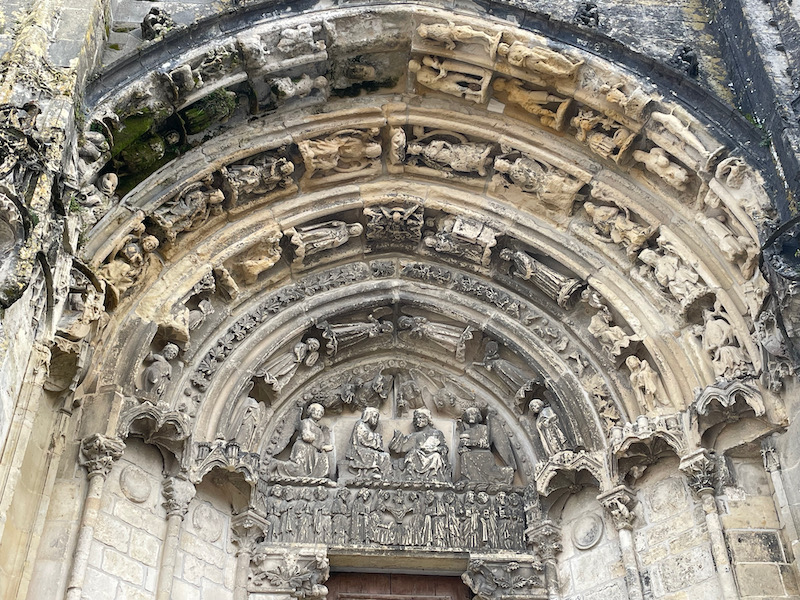
Moving inside, you can see down the nave with the two side aisles (without many chapels) separated by the large columns. The Gothic arches are present down the aisles as well as in the ribbed vaults of the ceiling. One very interesting point in this church is the brick in the ribbed vaults down the nave.
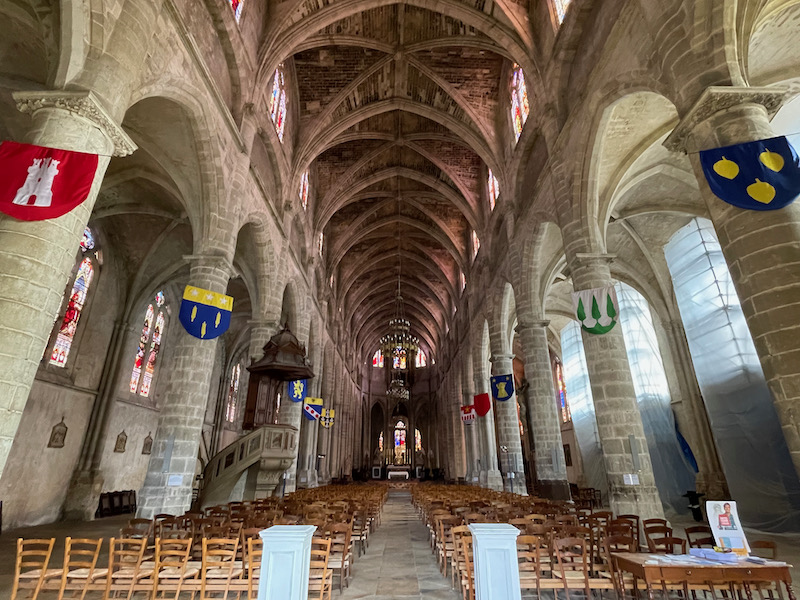
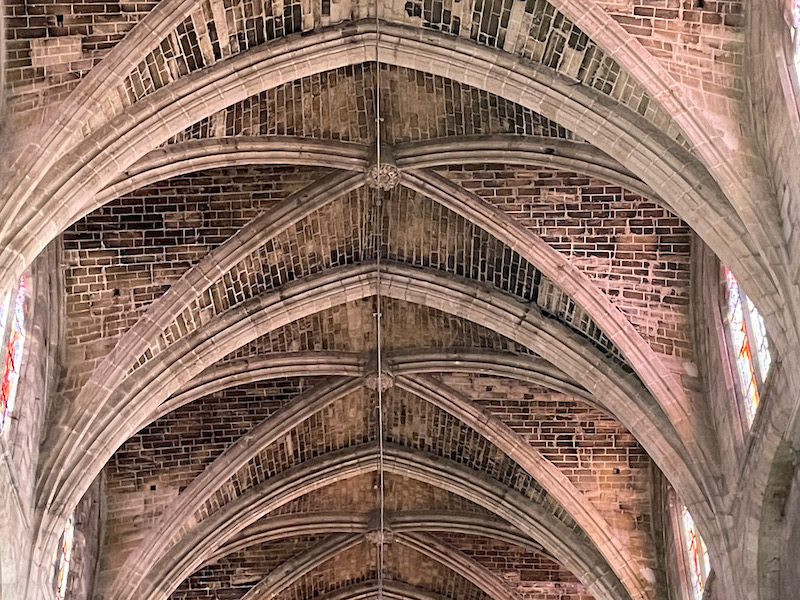
There are 64 stained-glass windows around the church that were done by Joseph Villiet between 1852 and 1862, including the rose window over the organ.
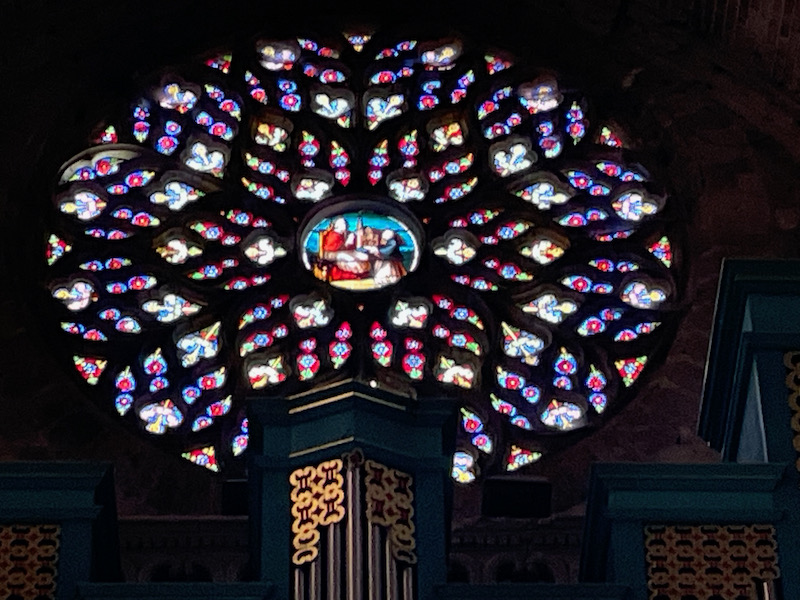
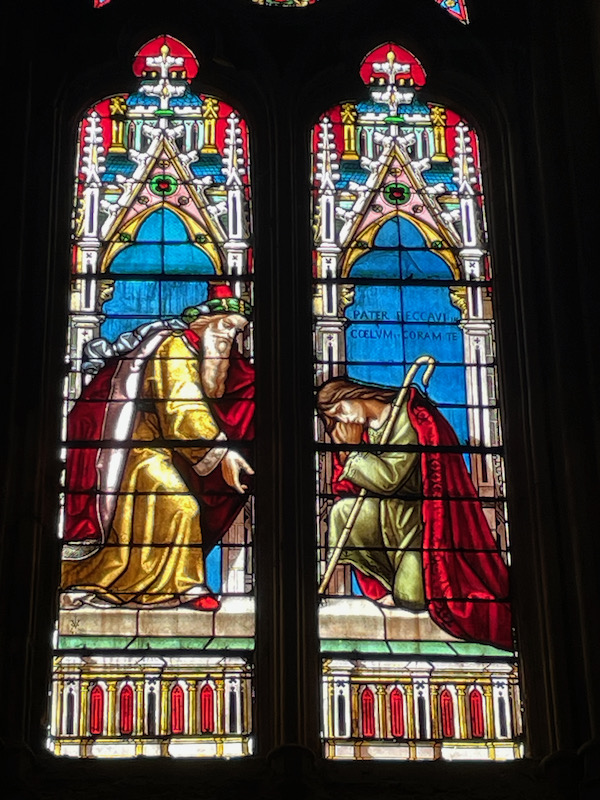
The organ case is quite colorful, painted green and gold. The original organ was destroyed during the Wars of Religion and then the next organ was destroyed during the French Revolution. This one dates from 1878.
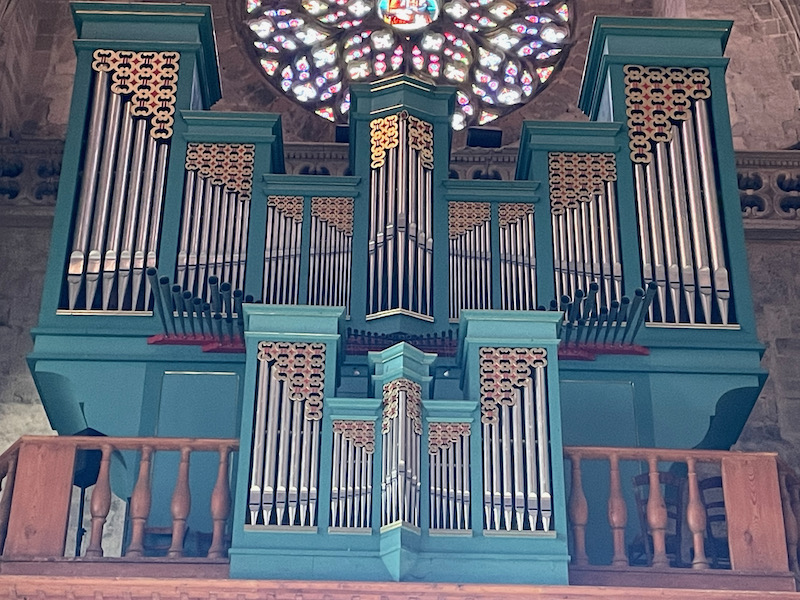
The main altar of the cathedral, in the Louis XVI style, is from the 18th century. It comes from the Cistercian abbey of Rivet.
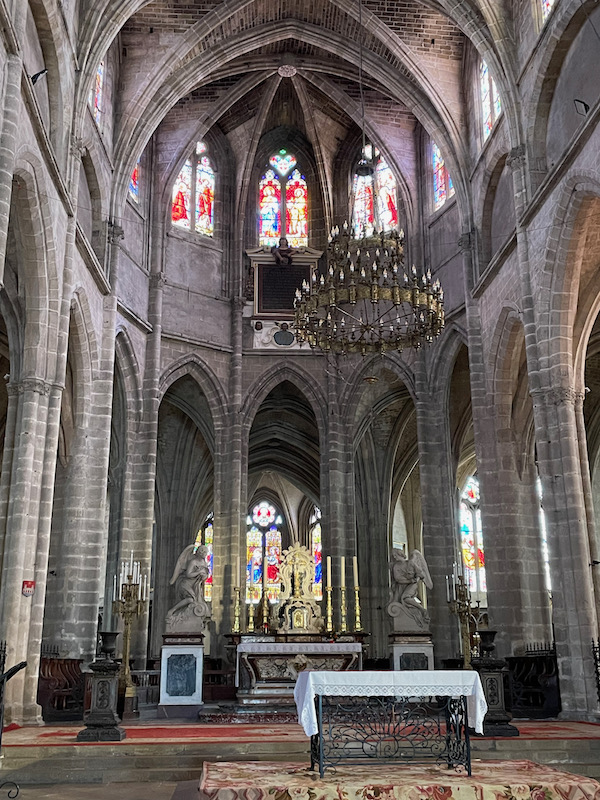
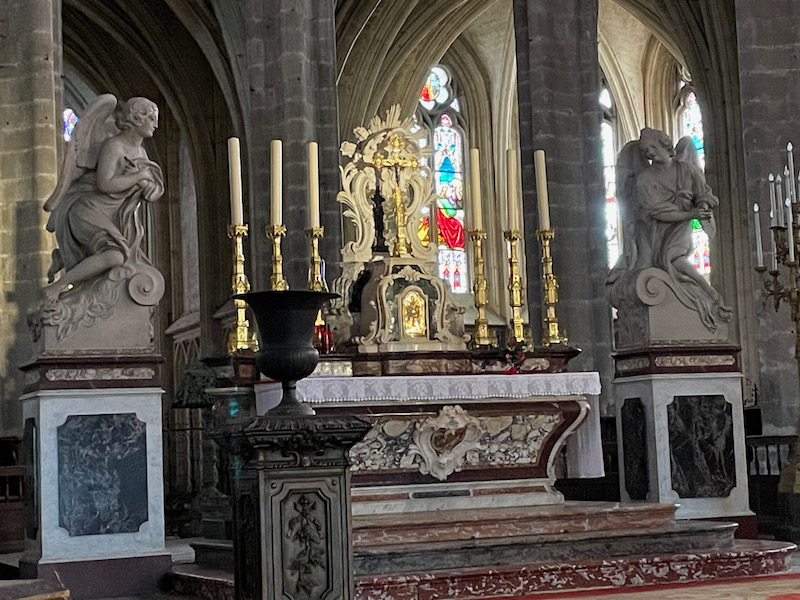
There are a few chapels around the apse. This one, the Radiant Chapel of the Blessed Sacrament:is an example of the "original" decor, where you can see the painted decor around the side. The altar decorated with numerous modern statues.
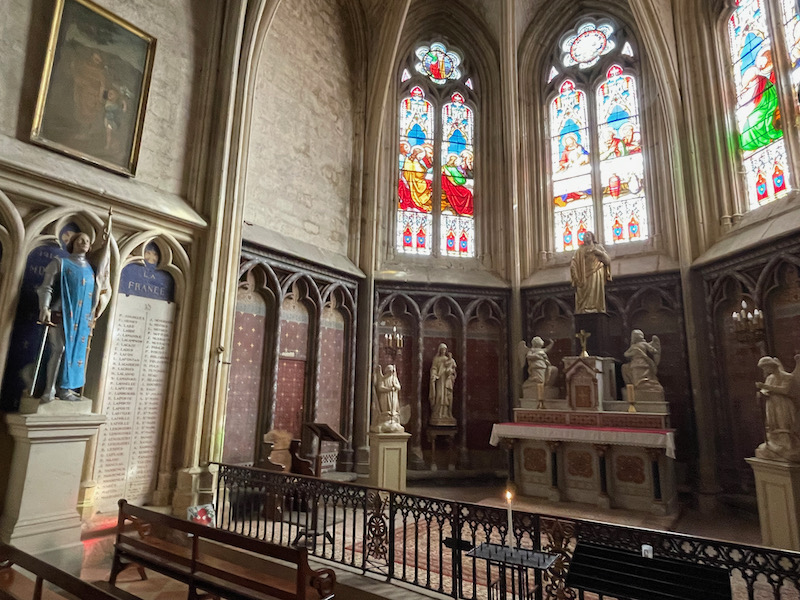
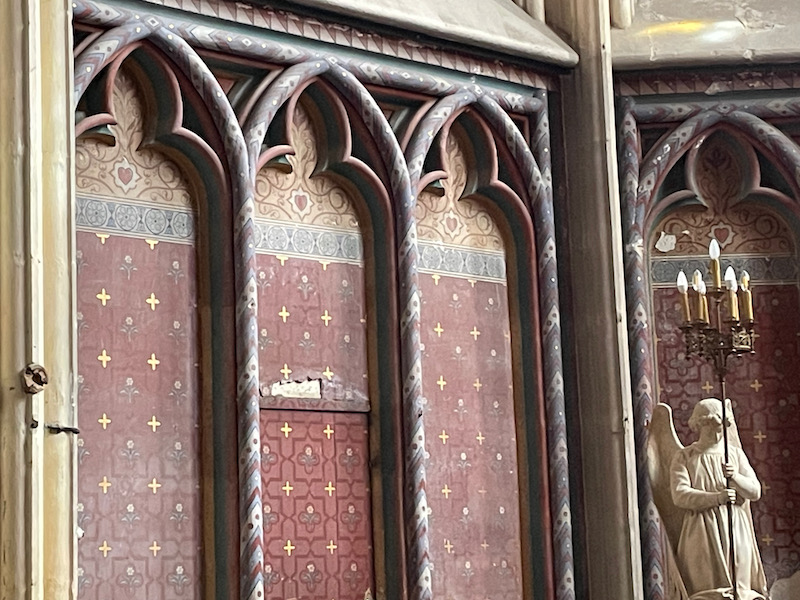
And this chapel, the Chapel of Saint Peter, the paintings in a modern-style and show scenes from the life of Saint Peter (including some of the same from the tympanum... Peter sinking in the water when he has doubt, and the miraculous catch of fish.
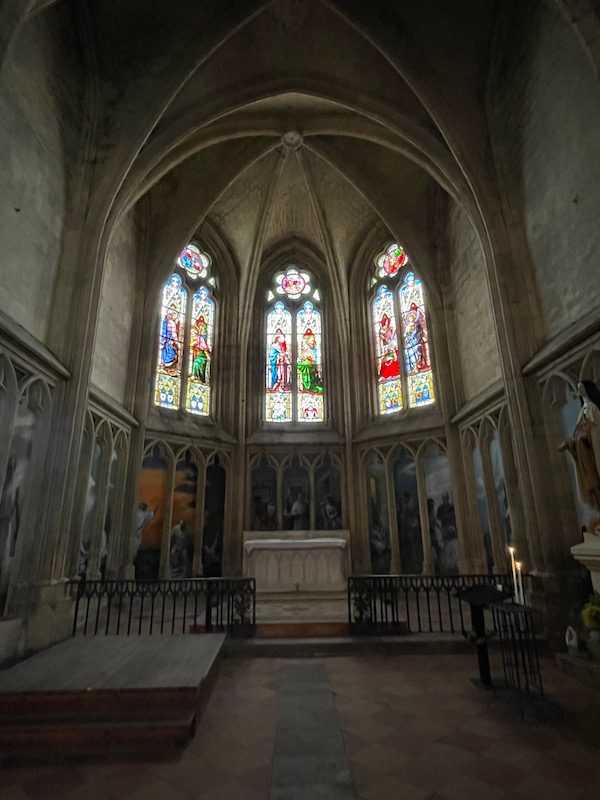
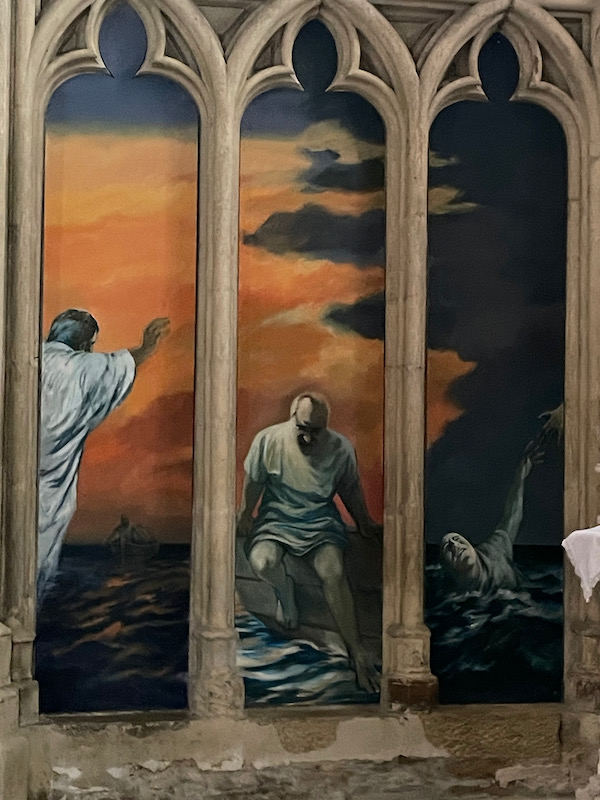
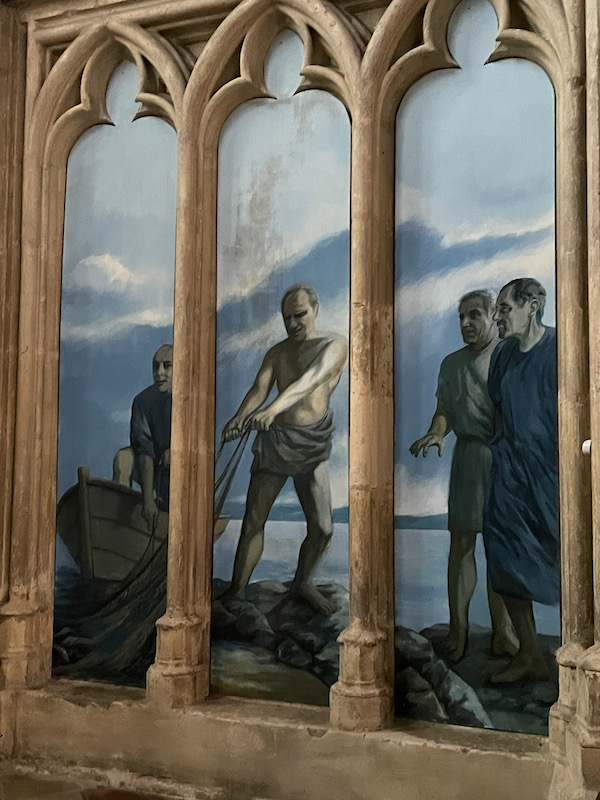
I mentioned earlier that it was a fortified town, and here is one of the original gates into the city, named the Porte du Gisquet. The majority of the fortifications were destroyed during the religious wars which ravaged the town. It was restored in the 19th century when the windows and machicolations were added (the original gate had no openings other than the doorway itself).
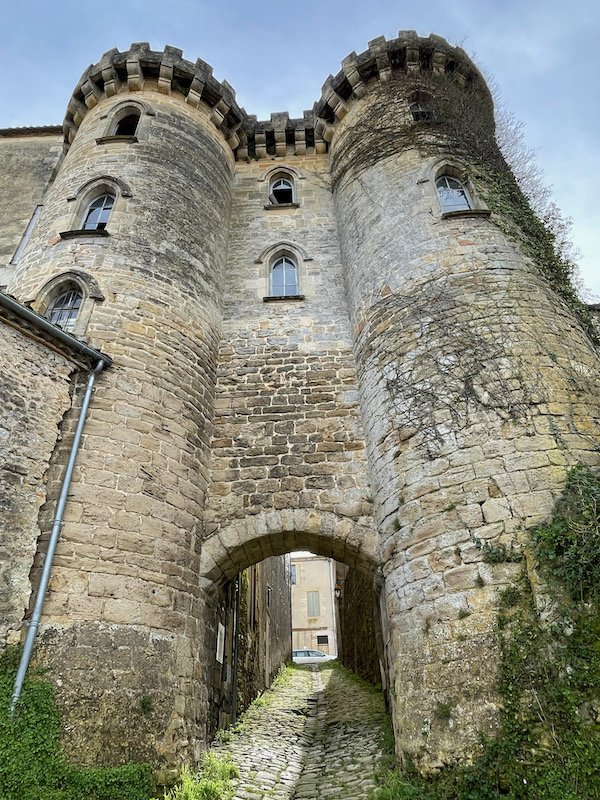
There are a few nice houses around the main square, but this one for me was the most interesting. Built around 1530, the Maison de l'Astronomie gets its name from the Gothic decoration consisting of the moon, the sun, and an oriental character wearing a pointed cap. Its stepped or sparrow-step gable, reminiscent of Flanders, also earned it the name "Dutch house".
